The Forestcore Aesthetic Brings Nature Indoors in a Majorly Cozy Way
Give your home a lush makeover with this woodsy aesthetic.
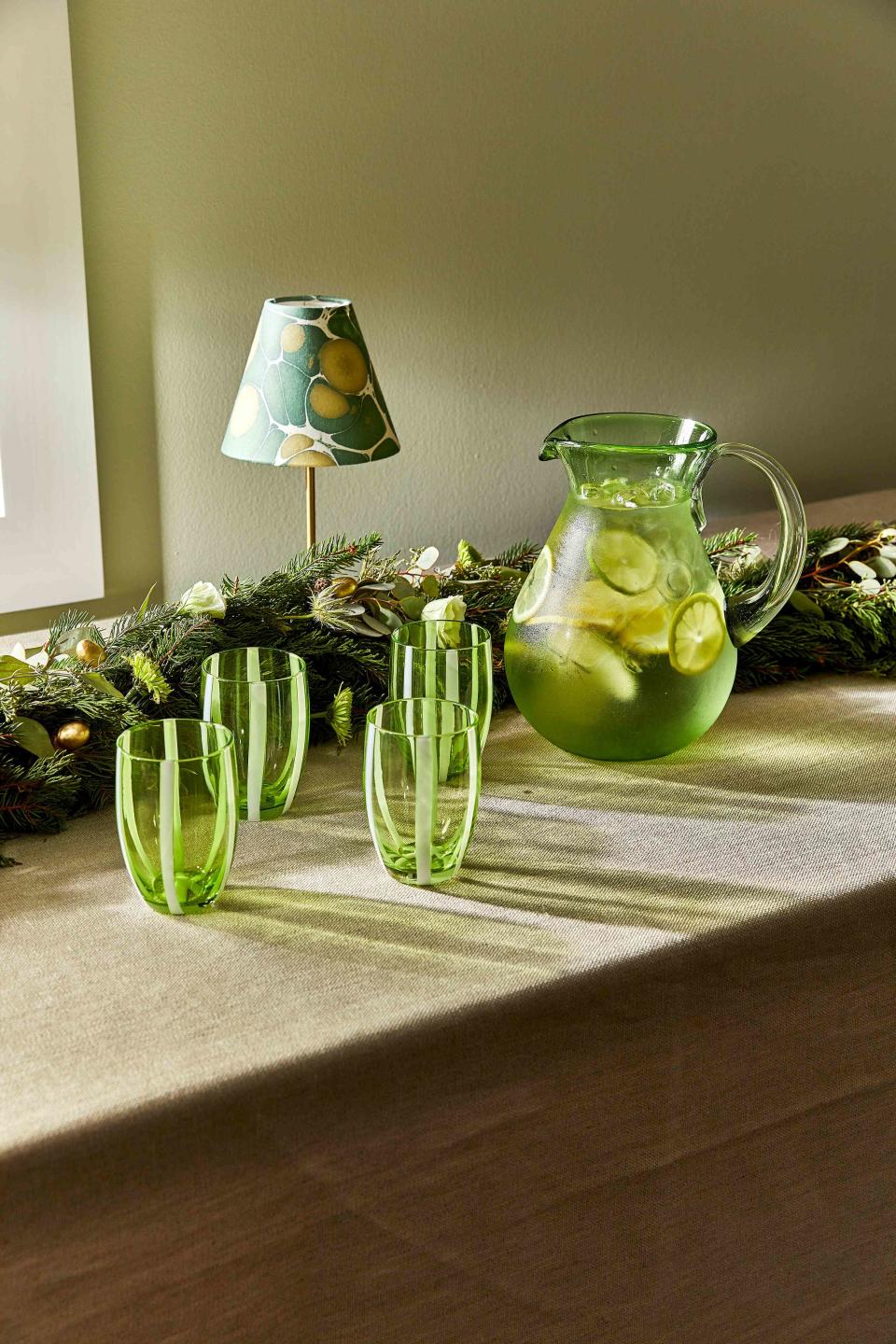
Kelsey Hansen
A woodsy decor trend has taken root on social media and flourished: Forestcore has grown enormously in popularity, accumulating more than 140 million views on TikTok alone and channeling inspiration for decor, dark color schemes, and personal attire.
This growing aesthetic is focused on all things forest. A goal of the decor trend is to make a room feel as much like the uninhabited woodlands as possible. Dark colors, wood, stone, plush fabrics, and plants are the backbone of this style, all working together to create an atmosphere that’s mysterious, lush, and wild.
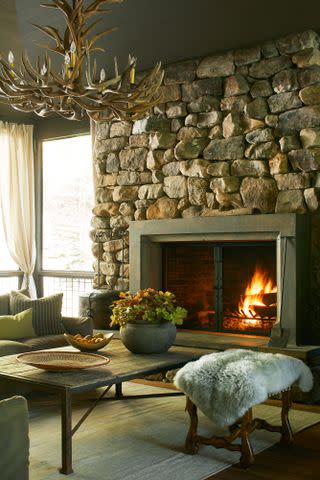
John Bessler
Forestcore vs. Cottagecore
On the surface, it can be easy to confuse these two interior design trends. Both feature heavy influences from nature, texture, and maximalism, but they’re showcased in different ways.
Cottagecore is inspired by a simpler way of life, filled with tons of florals and woods tones, much like forestcore. Cottagecore differs by having bright colors, bold patterns, and nostalgic furniture (like grandmacore!), while forestcore embodies what you see in the outdoors through earth tones, plants, and raw materials. While there are overlapping aspects of these design trends, ultimately, cottagecore is more delicate, and forestcore leans more rugged.
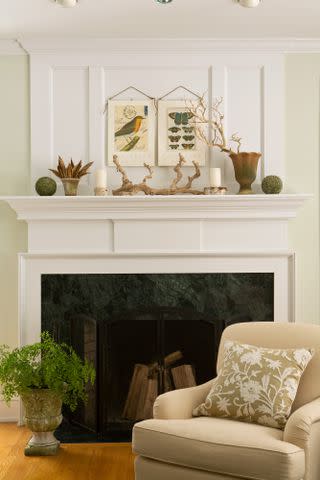
Michael Partenio
5 Ways to Bring Forestcore into Your Home
1. Forestcore Colors
This might seem obvious, but forestcore should utilize dark earthy tones. If you struggle to form a color palette, take inspiration from nature-oriented destinations. Think of colors that saturate iconic natural spaces from coast-to-coast, such as the California Redwoods or the Appalachian Trail.
From light to dark, muted to vibrant, green is a pillar of the aesthetic. Brown is another prevalent color. Choose from a wide range of tones and shades and pair green and brown with pops of colors like reds, whites, yellows, and oranges to mimic the natural environment.
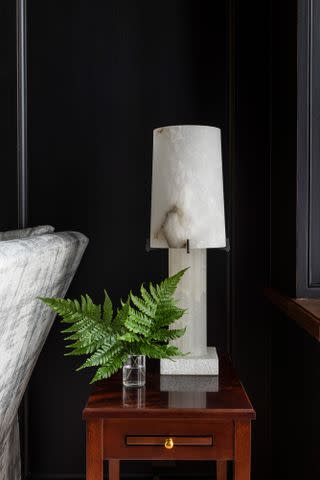
Julie Soefer
2. Add Texture
Bring some of the outdoors in for some fresh inspiration. Forests are brimming with a balance of natural textures. Replicate them by including a mixture of soft and hard elements: The forest floor is soft and pliable, covered in moss, leaves, and grass, while natural materials like trees, stones, and branches are hard and supportive. Opt for rich fabrics like velvet, sherpa, or faux furs for bedspreads and upholstery. Add wood furniture to tie the space together, and use stone accents like marble and concrete in decor items like vases, planters, or trays.
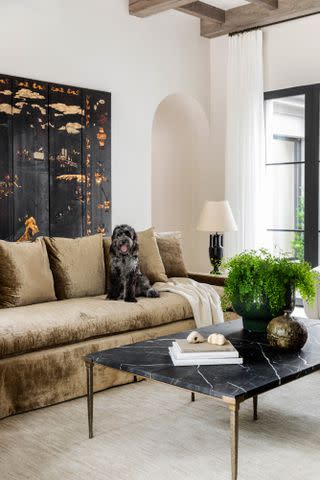
Julie Soefer
3. Highlight Your Decor
In a real forest, light peaks through the dense canopy of leaves and branches. With a dark, moody environment, use light or reflective material to highlight specific elements. Add shimmering accents to your space like metallic decor, mirrors, or backlighting. For a permanent light fixture, include sconces for a warm, localized light source.
The natural, flickering flame of a candle—or several—is another perfect forestcore accessory. Plus, you can channel all your senses within your forestcore space with the right scents: Choose musky scents like balsam, pine, and sandalwood. Burning incense and candles will help emulate the natural scent of a forest.
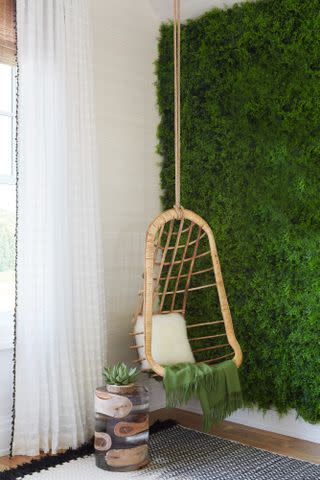
Werner Straube
4. Add Natural Elements
Forests are full of life. Lean heavily into biophilic design by including plants in your space to add a living element. To make the most impact, think of adding a living wall to your home. This floor-to-ceiling indoor vertical garden will provide tons of greenery and foliage, truly channeling a forest feel.
For something a little simpler, get a houseplant. Easy plants to care for include snake plants, spider plants, ZZ plants, and rubber plants. To add plants with more foliage, think of including ferns, calathea rattlesnakes, parlor palms, and jade plants. If you want to fully commit to the forestcore aesthetic, grow your own tree. Options like a money tree, dragon tree, or Norfolk Island Pine are perfect for indoors, offering height without being unmanageable. You can also mimic the canopy of a forest with vining plants. Hanging various plant pots from your ceiling will add dimension: Check out cascading beauties like ivy, creeping fig, jasmine, heart-leaf philodendron, inch plants, or string of pearls for easy indoor vines.
:
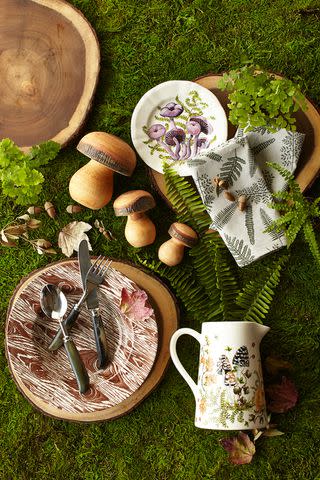
Jacob Fox
5. Add Organic Shapes and Materials
Don’t be afraid to let your personality shine and your imagination run wild. Your forestcore space can be as literal or fanciful as you desire. Consider adding decor elements from nature like leaf prints, mushrooms, crystals, dried flowers, and raw wood.
You can also personalize your space by getting crafty. DIY everything from realistic mushroom-shaped shelves and canopy lighting for your bed using light strands and leaf garlands to dried flower shadow boxes. These options add small bursts of color without straying from the forestcore theme.
When adding furniture to your space, try adding curved or overstuffed options. Overstuffed furniture is a rising trend, saturated with plush cushions. In addition to being super comfy, it definitely supports the unrefined theme of forestcore.
:

